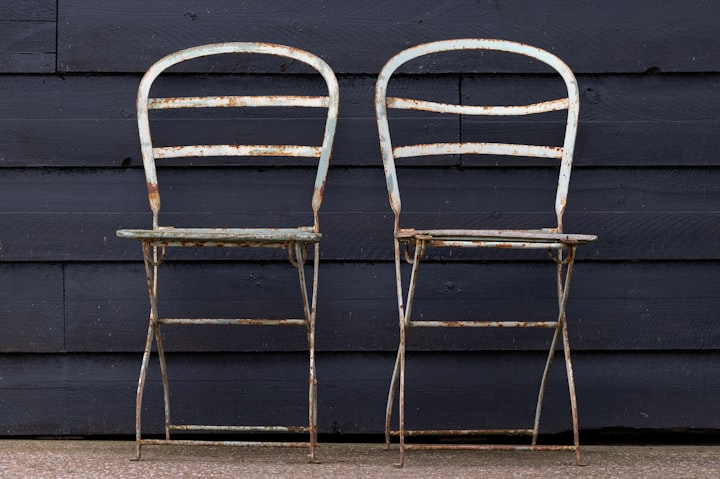The Train is the Best Tourist Attraction of Any Major City.
I'm actually really very serious.

Let’s assume that you were interested enough in my traveling habits to ask me what the main thing I like to do in any new place is. My answers would be short, simple, and for many people, probably kind of weird: The first thing I’d do is check out the place’s public transportation system.
I’ve always enjoyed trains. When I was young, taking the train was a somewhat rare occurrence. My dad would take us on the Metro Blue Line to the Red Line to get to Universal Citywalk or Hollywood, thus eliminating the need to pay ridiculously high parking fees. I’d take the Amtrak to San Diego with my elementary school classes. A few times my mother’s family took the Metrolink to Pomona to get to the County Fair — once again avoiding parking. Considering the fact that as a child, I paid almost no mind to the driving of cars — or looked up from my books when riding in one — it should have been a surprise to no one that I would never be a good driver. The fact that car directions glide over my head like an elite ice skater is to be expected. It should have also glaringly obvious, based on the fact that I stared out the window in awe while on the train, and never minded if the homeless guy lifted his eye cap to show that there was nothing under there, that the train would be my ideal mode of transportation.
But I digress. There is an actual reason why I like to check out the PTS of any new place I visit. Over the past few years of riding the train and the light rail on a regular basis to and from Los Union Station, I have come to understand that that place, and the trains that travel to and from there, are essentially a microcosm of Los Angeles itself. On any given day, you can walk down the main corridor of Union Station and see everyday middle-class office workers, tourists, folx experiencing homelessness, and people who work low wage jobs and need an affordable way to get to them. You see queer folx and straight folks alike. People of every color and from every background is represented, on a regular basis. I don’t think it’s too much to say that for many of us, walking through Union Station is the only time we are near people who are so much unlike ourselves, and yet breathing the same, engine-y air. We are all buying stuff at Starbucks or Trimana or Wetzel Pretzel. We are all upset if our train is delayed, or happy when we are able to nab a place to sit on a crowded car.
When you ride the rail, you are often forced to share a car with someone who has no home. You are forced to see how tired they are, how their quality of life isn’t quality at all. You can’t just walk past them and pretend they don’t exist. You have to sit near them. At times, you encounter someone with serious mental health issues, and there is no way you can deny the fact that there is a serious lack of resources for these individuals in Los Angeles. You can try and shut their speech out with headphones, but the sound always leaks in around the edges.
On the other hand, you have folx in white collars who simply find it easier and cheaper to take the train to work. Or, you have groups of young adults taking the train to a party, concert, or amusement park, as I have many times because it’s so convenient.
That’s where my sightseeing comes in when I’m in a new place. You can learn a lot about the values that the city and its people hold by taking the train. If you hop on and pay attention to whether or not the train is clean, or how convenient it is to catch it, you can begin to understand how the city caters to its citizens. You come to understand who is important to them, how they feel about the environment, and you can catch a glimpse at what they want their future to be.
Let’s take Portland, for instance. Portland’s PTS is quite pleasant. There’s a healthy mix of people riding it, and tourists and citizens alike are encouraged to take the rail to their destinations around Portland, wherever that may be. The rail system has a stop that is conveniently close to their zoo, a tree museum, and a lovely path unlike anything that I’ve seen or ever will see in Southern California. While visiting, I could have driven around Portland, but I didn’t have to because the tram and the rail was so easy. Plus, Portland arranges their streets to be more bike and pedestrian-friendly (read: driving there is a pain in the ass). On top of everything, a riding pass for the day only costs $5. There’s a lot you can take away about what’s important to Portland just through that.
You can also look at the L train in Chicago. It’s not as clean as Portland or even Los Angeles, nor is it exactly easy to figure your way around if you’re a tourist. Based on what I saw while there, it’s also not so easily accessible. The population on the train wasn’t so mixed, consisting primarily of working class people. If the views coming back around on the pink line weren’t so stunning — views of the Chicago River surrounding downtown — I would almost call it dreary. The day pass was also twice the cost of Portland’s.
Let’s turn back around and look again at Los Angeles. I can say with some confidence that Los Angeles is a strange, beautiful, trashy, hypocritical monster. This is reflected in many ways, from the homeless folx sleeping on the lawn of City Hall, to the continued development of expensive condos while working and middle-class people struggle to find affordable housing. Our city is diverse and chaotic and proud, even while us normal folx struggle as the city continues to cater to rich and upper-middle-class citizens.
Believe it or not, you can see a lot of this on the train as it exists, as well as how the city and cooperating organizations (Metro, Metrolink) sees its PTS expanding. Over the past few years, Metro has been building up its transportation system, adding a line that goes from Downtown Los Angeles to Santa Monica, right past USC (the Expo Line), as well as developing the Crenshaw Line which will connect the Purple Line (Wilshire) to the Green Line and LAX. Stops in cities that have often been overlooked such as Compton have been getting makeovers and enhancements to service. Posters and PSAs encourage proper train etiquette and discourage offensive and violent behavior on a loop over the speakers.
Since I started riding the train and light rail regularly a couple of years ago, police and security figures have vastly increased, regularly checking tickets and harassing homeless people trying to sleep. This was something I never witnessed while riding the train as a child. Then again, as a child, the only people I remember being on the train were working-class folx, folx experiencing homelessness, and folx with mental health issues. I’m sure it wasn’t so segregated as that, but that’s all my young eyes saw in the crowded cars. If I were young and on the train now, there’s no way I could miss the white-collar professionals, the students, and the kids going for a fun day at Santa Monica (if that line had even been around at that point, which it wasn’t).
There has been controversy about where new stops would be added and which neighborhoods would be passed by. Citizens like those in Leimert Park nearby the new Crenshaw line argued that not having a stop will continue to limit the economy of the historic black cultural center. Meanwhile, the same line’s proximity to Inglewood makes some fear that it will worsen the already booming gentrification of the city. As a whole, as Metro has expanded its line, real estate costs have gone up around stations. There is a perpetual argument that more trains, especially in low-economic areas, only helps those citizens. This is an argument made by planners, historic preservationists who understand that old homes often lay near or in these centers of low economy, and by those have an understanding of how the world should work if cars are the ultimate way to travel, and therefore a better choice than the PTS. The reality, at least in Los Angeles, is the exact opposite.
Just by looking at how the trains are used now, and where they plan to go, it would seem that the PTS in Los Angeles is gearing itself to be an extra perk for folx who can afford to live in wealthy areas of Los Angeles County — Los Angeles, Hollywood, Long Beach, Santa Monica, sections of the Valley, and, increasingly, Inglewood. The rest of the stops/cities? Well, you can come along on the ride if you’re well behaved, pay your toll, sit quietly, and aren’t homeless. Los Angeles is fascinating that way.
In fact, every city is fascinating that way. I’m sure that if I spent more time riding around on Portland’s PTS, or Chicago’s, or Denver’s, or New York’s, or any PTS in the USA, and paid just a little attention to their plans, I would understand more fully how the city works. Who lives there? What do they do for fun? What are some of their more serious issues? How do they handle folx that need a little extra help? Where do people live? How do they live? Are they healthy? Is the city healthy?
In my mind, because of the wealth of information, you can glean in even just a short amount of time, there is no better way to tour a new place than to park your car and not use it for the duration of the stay. Then, instead of playing Candy Crush as you ride the rail, do a quick bit of googling and read up a little on the local transportation system.
The second best way to tour a city? Find the city’s best brewery and drink, eat, and be merry. Then back to the PTS because bitch, you’re drunk.
About the Creator
Camille Ora-Nicole
Hi! I'm a writer, artist, placemaker, and producer from Southern California. When I'm not writing, I'm drawing, and if i'm not drawing I'm working on a project, and if not doing any of that, i'm Netflix and chillin'. IG: @oracami_studio






Comments
There are no comments for this story
Be the first to respond and start the conversation.